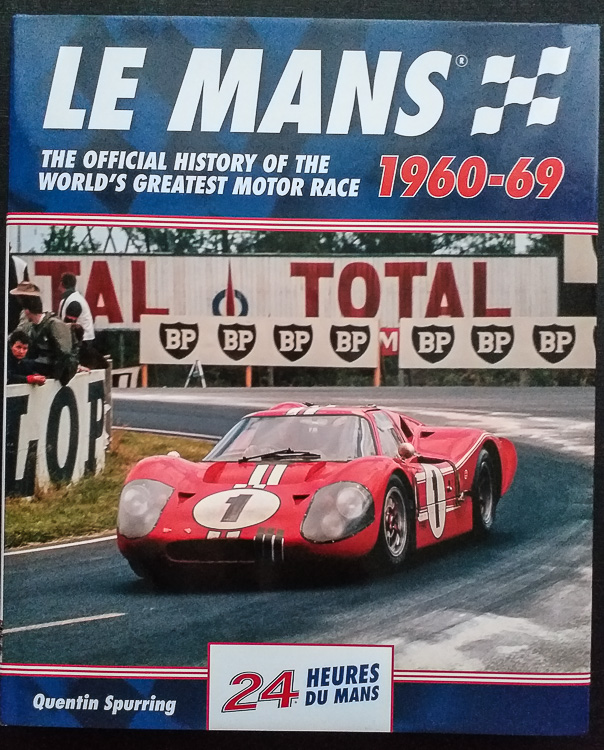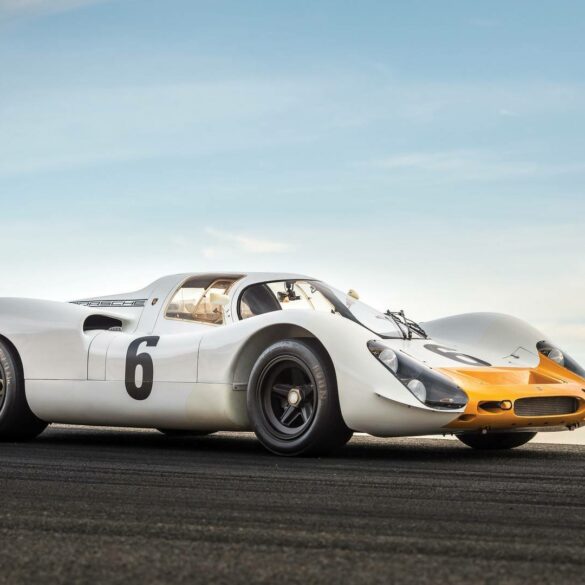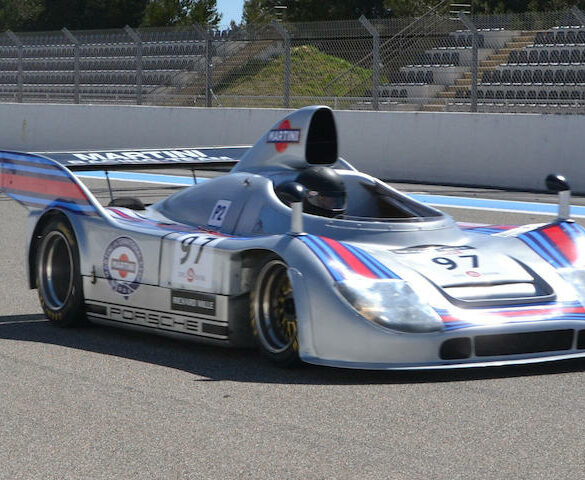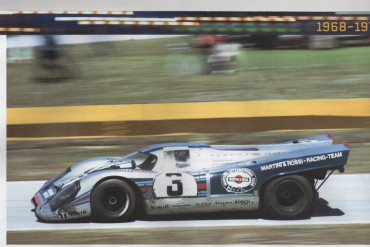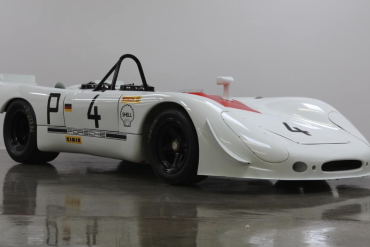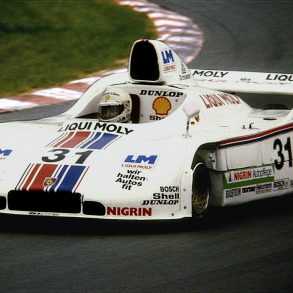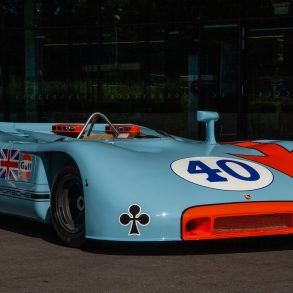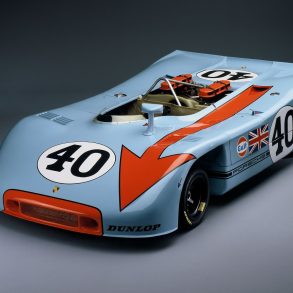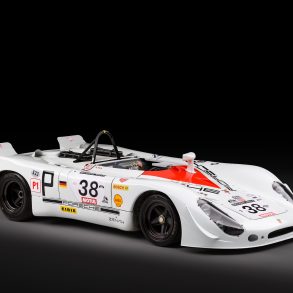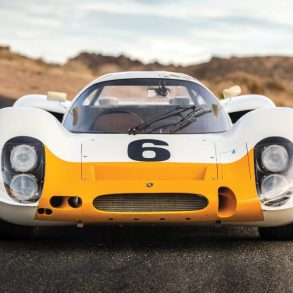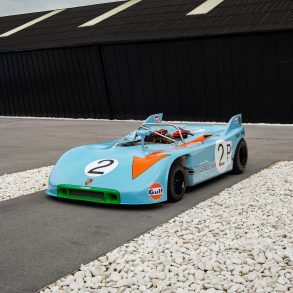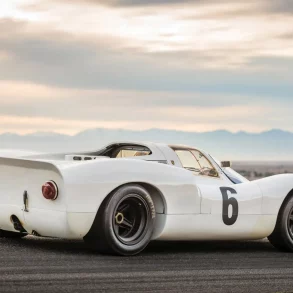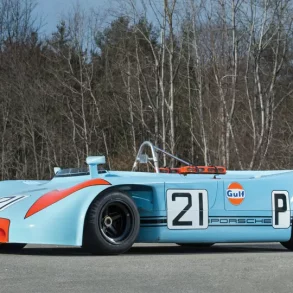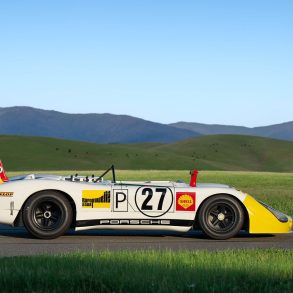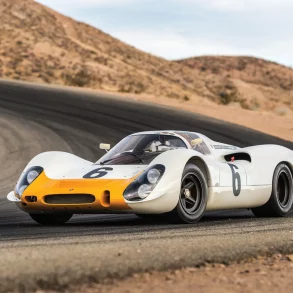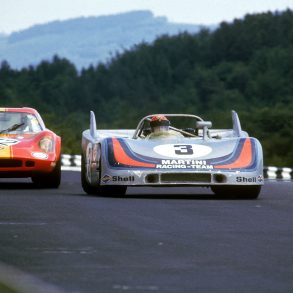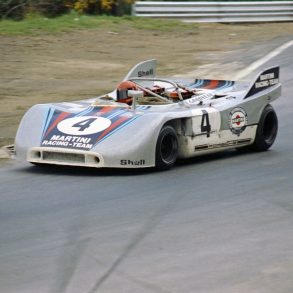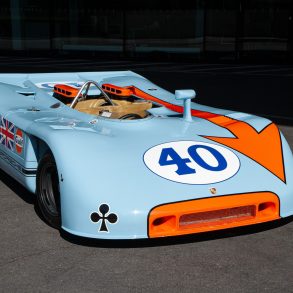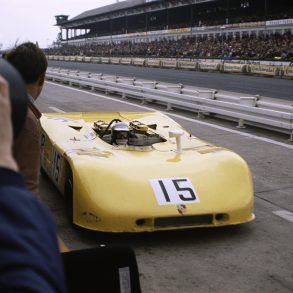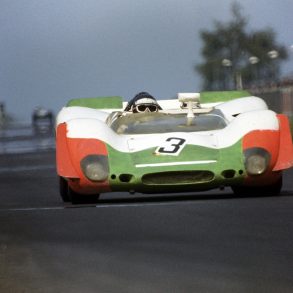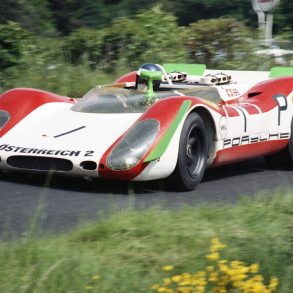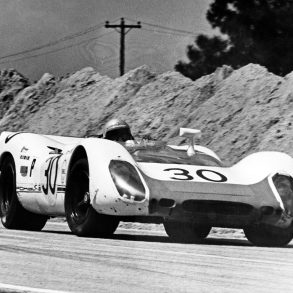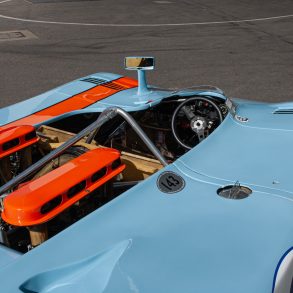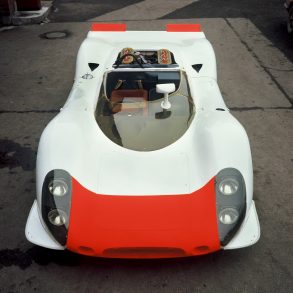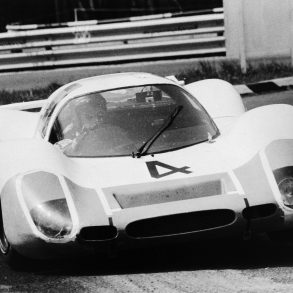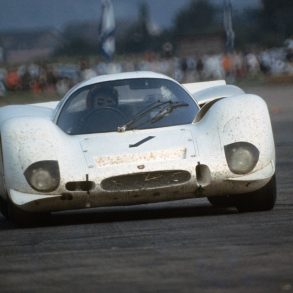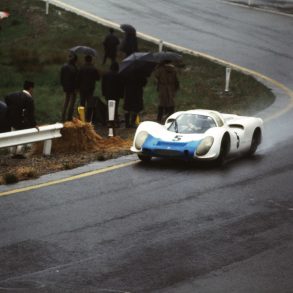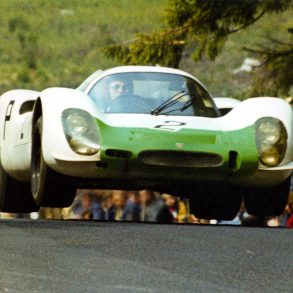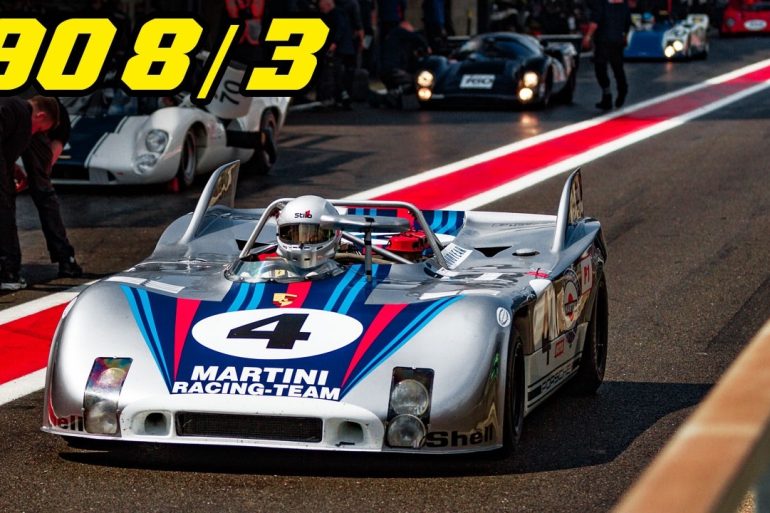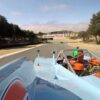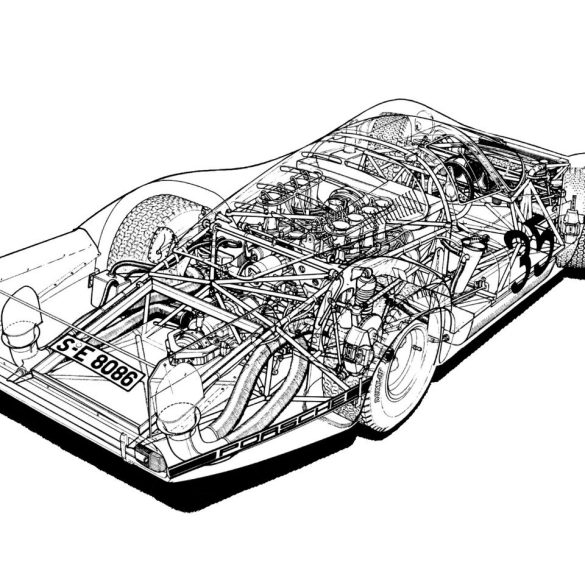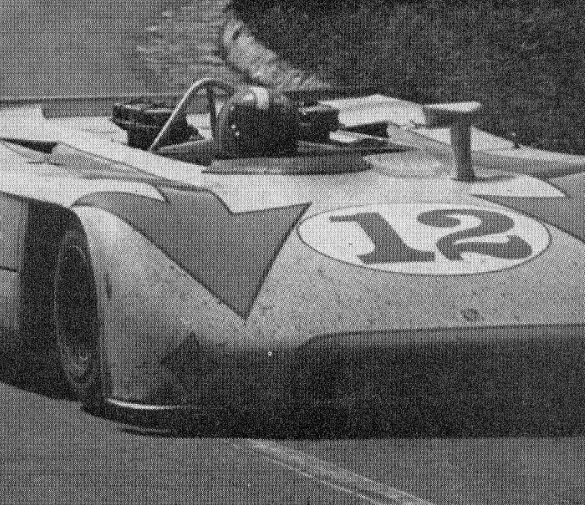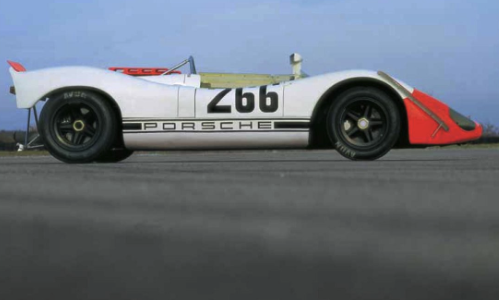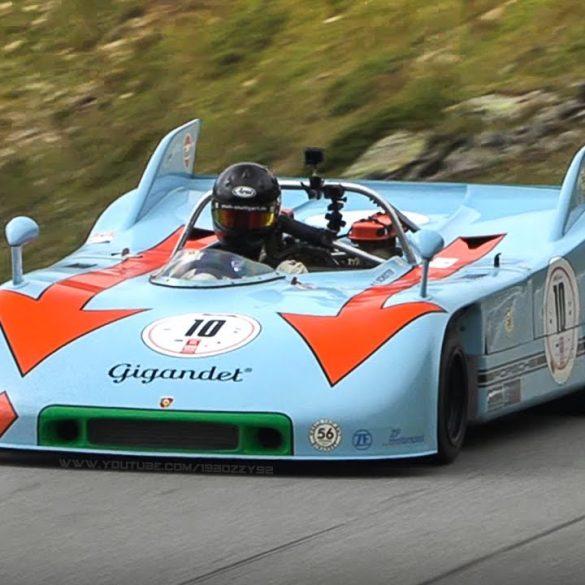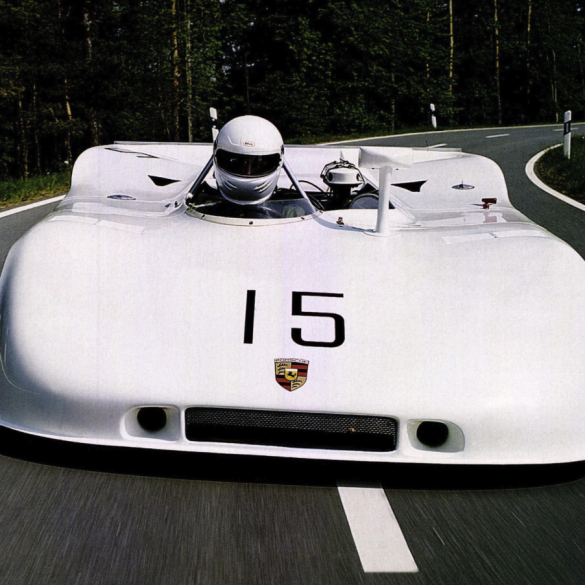Porsche 908 - The Ultimate Guide
Raw. Relentless. Revolutionary.
Model Guides / Featured Stories / Data & Research / Pictures & Videos / FAQs / News & Updates
Porsche 908 Basics
Manufacturer: Porsche
Production Years: 1968 - 1971
Production: ~ 31 units
Assembly: Germany
Chassis: Spaceframe chassis
Layout: Rear mid-engine, RWD
Bodystyle: Coupe, Spyder
Engine: 3.0 L Flat 8 (908/01, 02, 03), 2.1 L turbo Flat 6 (908/03)
Transmission: 5-speed manual
Weight: 6500 kg (1,430 lb)
Designer(s): Wilhelm Hild
Predecessor: Porsche 907
Successor: Porsche 936
Porsche was a big underdog during the 1967 World Championship. Despite using engines no larger than 2.2 liters, Porsche lost the World Championship of Makes by one single point in 1967. Porsche decided to up engine size and even the odds. The 908’s mid-mounted engine was essentially a larger version of that used by the 2.2-liter 907. The FIA’s new three-liter prototype (Group 6) and five-liter sports car (Group 4) regulations adopted for 1968 presented the right opportunity.
The 2.2-liter 907 started the 1968 season spectacularly with wins at Daytona, Sebring and the Targa Florio. The 908 followed shortly, enjoyed few victories, endured frustrating mechanical failures – and lost the 1968 championship to Ford’s GT-40. Porsche began development of a new eight-cylinder boxer motor. The new engine made its first appearance during Le Mans testing in April 1968, but the earliest versions of the engine were subject to severe vibration, an issue resolved by changing the firing order and using the 66-mm crankshaft.
Meanwhile, Porsche was working on the Type 917, built hard on the heels of the 908, was ready for homologation in 1969, but typically was too green to spearhead the Porsche world championship attack. That chore fell to the trouble-plagued 908, which by now had received such major changes as an aluminum space frame, a newlydesigned crankshaft, 15-inch wheels and a new five-speed transaxle. With Bosch Kugelfischer indirect fuel-injection and 10.4:1 compression, the engine produced upwards of 350 hp at 8,500 rpm and 232 foot-pounds of torque at 6,600. Scaling barely more than 1,300 lbs., the 908 enjoyed a dazzling horsepower-to-weight ratio.
The 908 series caused a lot of headaches at Zuffenhausen. The new race car started out as a coupe in 1968 (908/1), lost it roof for the following season (908/2) and did well competitively. The powerful V12-powered Porsche 917 became the main car for Porsche in 1970, but the company decided to continue running 908 wanting to have specific cars for each type of a track. The 908 was a perfect car for twisty and slow tracks such were Nürburgring or Targa Florio.
A new version, marked as 908/03, was developed based upon the lightweight and short Porsche 909, which was used in hillclimb races. The 908/03 was more powerful and shorter than the 908/02 and weighed incredible 545 kg. The 1971 version of the 908/03 was the last 908 built by the factory, but private racing teams continued to develop these cars further and in 1975 some of the cars got 2.1-litre turbo engines straight from Porsche's racing department. Porsche would build 31 examples of the 908 from 1968 to 1973 in both long-tail and short-tail coupe and Spyder configurations.
Porsche 908 Data & Research
We dig into some of the data surrounding the Porsche 908, including production numbers, specifications, chassis numbers and much more. 3.0 I flat 8 (908/01, 02, 03) 2.1 L turbocharged flat 6 (908/03). In terms of power, the early 908s were seeing 350 hp from their 3 liter Flat 8s, while the privateer Turbo 908s were seeing 500+ hp from their smaller turbocharged flat 6 engines.
Porsche 908 Pictures, Galleries & Wallpapers
The 908 originally was a closed coupe to provide low drag at fast tracks, but from 1969 on was mainly raced as the 908/2, a lighter open spyder. Sold off to privateers for 1972, various 908s were entered until the early 1980s, often retro-fitted with Porsche 934-based 2.1-litre turbocharged flat 6 engines. The thing you will notice with all these variants is just how varied the 908s looked over the years, especially depending on their body styles.
Porsche 908 Videos
Watch our curated selection of Porsche 908 videos, showcasing its thrilling racing legacy, innovative engineering, and unforgettable moments on the world’s toughest tracks.
Porsche 908 FAQs
Explore our Porsche 908 FAQs for quick answers to the most common questions about this legendary race car's history, specs, variants, and racing achievements.
How many Porsche 908 are there?
Porsche built approximately 31 Porsche 908s between 1968 and 1971, across several distinct versions and configurations, including 908/01, 908/02, 908/03, and 908/04 (a later modernized concept).
Each variant served a specific racing purpose:
The original 908/01 featured a long-tail body for high-speed tracks like Le Mans.
The 908/02 introduced a lighter, open-cockpit "spyder" design for twisty circuits like the Targa Florio and Nürburgring.
The 908/03 was even more extreme—ultralight and compact, built specifically for tight, technical courses.
The 908/04, created decades later as a tribute and concept, was never a factory race car but rather a modern homage blending retro design and modern tech.
Though production numbers were low, the 908 had an outsized impact in racing, earning numerous victories and playing a pivotal role in Porsche’s climb to prototype racing dominance.
What is the price of a Porsche 908 today?
Today, a genuine Porsche 908 can command prices ranging from $4 million to over $7 million, depending on the specific variant, originality, condition, and—most importantly—its racing history.
Cars with documented entries or podium finishes at legendary events like the 24 Hours of Le Mans, Targa Florio, or Nürburgring 1000km tend to reach the higher end of that spectrum, especially rarer versions like the ultra-light 908/03. Due to the car’s low production numbers (around 31 built) and its critical role in Porsche’s prototype racing legacy, the 908 is one of the most coveted vintage Porsche race cars among collectors and historic racing enthusiasts.
Some well-preserved or historically significant examples have exceeded $8 million in private sales or auctions, especially those with connections to iconic drivers or factory-backed teams.
What kind of engines and horsepower did the Porsche 908 have?
The Porsche 908 was powered by a 3.0-liter flat-eight engine, developed specifically to comply with the new FIA prototype regulations introduced in 1968. Across its various iterations, the engine produced between 350 and 370 horsepower, depending on tuning, configuration, and variant.
This high-revving, air-cooled engine was a masterpiece of lightweight engineering, delivering strong power and excellent reliability—ideal for grueling endurance races like Le Mans and the Nürburgring 1000km. Later variants, such as the ultra-light 908/03, took full advantage of this power in a chassis weighing less than 600 kg (around 1,300 lbs), resulting in exceptional agility and performance on tight, technical circuits.
While the Porsche 908 was primarily known for its 3.0-liter flat-eight engine, there were a few notable variations and experimental configurations over its development that used different engines—though they were limited and not widely used in competition.
In the early 1970s, Porsche began experimenting with turbocharging in endurance prototypes, leading to the development of cars like the 917/10 and 917/30. A turbocharged version of the 908 flat-eight was tested but never widely raced. This experimentation helped pave the way for Porsche’s dominance in turbocharged racing later in the decade.
The Porsche 908/04 is not an original factory-built 908 but a modern tribute car, created by private enthusiasts and engineers decades later. Some of these feature modern turbocharged flat-six engines or other powertrains inspired by the original flat-eight, but they are not official Porsche engines and differ significantly from the factory originals. So, while the 3.0L flat-eight was the definitive and most widely used engine in the Porsche 908, there were experimental and modernized versions that used different engines, primarily for development or tribute purposes. However, none of these alternatives overshadow the original flat-eight’s role in the 908’s racing success and legacy.
What kind of racing success did the Porsche 908 have?
The Porsche 908 was one of the most successful and versatile race cars of its era, playing a crucial role in Porsche’s rise to dominance in prototype endurance racing during the late 1960s and early 1970s. Designed to comply with the FIA’s new 3.0-liter prototype regulations, the 908 delivered a string of major victories and became a staple of Porsche’s factory and customer racing efforts.
The 908 debuted in 1968 and quickly proved competitive, scoring class wins and podium finishes at major events like the 24 Hours of Le Mans, where it finished 2nd overall that year. While it didn’t immediately clinch overall victories at Le Mans due to fierce competition from Ford and others, it showed tremendous reliability and consistency—traits that made it invaluable for Porsche's push toward championship success.
In 1969, the 908 truly hit its stride. It achieved 1st overall at the 1000 km of Spa, Nürburgring 1000 km, and the Targa Florio, solidifying its reputation as a formidable endurance contender. Porsche used a mix of 908/02 short-tail Spyders and long-tail coupes, depending on the circuit, giving the team maximum flexibility. The 908 was also a key part of Porsche securing the 1969 International Championship for Makes, a major achievement that proved Porsche could go toe-to-toe with Ferrari, Ford, and Matra.
Perhaps the most legendary variant, the 908/03, debuted in 1970. Designed for tight and twisty circuits, it was incredibly lightweight and agile. It won the 1970 and 1971 Targa Florio and Nürburgring 1000 km, dominating races that favored handling and finesse over brute power. Even after the introduction of the more powerful 917, the 908/03 continued to be used at specific events where its agility made it the better tool for the job.
In total, the 908 collected numerous overall wins, podium finishes, and class victories across the World Sportscar Championship, proving its worth in both factory and privateer hands. Its adaptability, endurance, and engineering excellence made it one of the most important race cars in Porsche history and a vital link between the early prototype racers and the legendary 917.
What was so special about the Porsche 908?
The Porsche 908 was special because it represented the perfect convergence of engineering precision, racing versatility, and strategic dominance—and it played a pivotal role in elevating Porsche from a class contender to an overall championship powerhouse in endurance racing.
Introduced in 1968, the 908 was Porsche’s answer to new FIA prototype regulations that capped engine size at 3.0 liters, the same limit as Formula 1. To meet this challenge, Porsche developed a lightweight, air-cooled 3.0-liter flat-eight engine, producing around 350–370 horsepower. But what made the 908 truly exceptional wasn’t just the engine—it was how Porsche tailored the car’s design to the specific demands of each circuit. From long-tail coupes for Le Mans to short-tail spyders and ultra-lightweight 908/03s for the Targa Florio and Nürburgring, the 908 wasn’t a single car—it was a platform for dominance, engineered with unmatched flexibility.
Its racing success spoke volumes. The 908 earned overall wins at major endurance races like the Targa Florio, Nürburgring 1000km, and Spa 1000km, and helped Porsche clinch the 1969 and 1970 International Championship for Makes. It became the foundation of Porsche’s strategic approach: choose the right car for the right track, and win through consistency, reliability, and intelligent design—not just brute force.
What makes the 908 especially important is that it bridged eras—it was the direct link between the earlier 906/907 racers and the legendary 917. Without the lessons learned from the 908, Porsche's greatest endurance victories might never have happened. Agile, adaptable, and victorious, the 908 wasn’t just a race car—it was a statement of intent, a turning point that proved Porsche could take on the world and win.
Join Our Porsche Community
Sign up for our weekly Porsche newsletter. The latest Porsche news, rumors, reviews and more delivered to your inbox. Cool Porsche stuff perfect for the flat-six obsessed.


